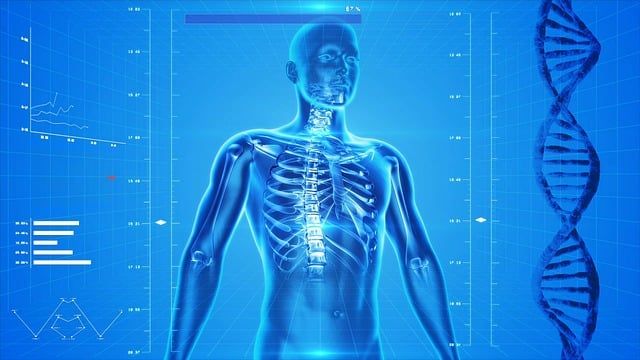What is the Correlation Between NAD and Aging?
Understanding the aging process has come a long way in recent years. Researchers have discovered numerous factors contributing to the gradual decline of health and vitality with age. One such factor that has gained considerable attention is the correlation between NAD levels and aging.
This insightful guide will delve into the intricacies of this correlation, exploring the role of NAD in cellular function, how aging affects NAD levels, the consequences of decreased NAD levels in aging, and potential ways to boost NAD levels for healthy aging. It will also touch on current research trends and potential breakthroughs in NAD and aging research, providing a glimpse into the future of this fascinating field.

What is NAD, and Why is it Important?
To understand the correlation between NAD levels and age, it is crucial first to grasp the significance of NAD in the body. NAD, short for nicotinamide adenine dinucleotide, is a coenzyme found in every body cell. It is pivotal in vital cellular processes, including energy metabolism, DNA repair, and gene expression regulation. Without adequate levels of NAD, these essential functions can be compromised, leading to a cascade of negative effects on your overall health and well-being.
NAD is not just a simple molecule but a powerhouse of cellular activity. It is involved in numerous biochemical reactions that keep your cells functioning optimally. One of its key roles is in energy production. Within your cells, NAD acts as a key player in energy production. It participates in vital metabolic reactions, such as glycolysis and oxidative phosphorylation, which generate ATP, the primary source of energy for cellular activities. Without sufficient NAD, your cells struggle to produce the energy they need to carry out their functions effectively.
But NAD doesn’t stop at energy production. It also plays a crucial role in DNA repair. Various sources, such as environmental factors and internal cellular processes, constantly attack your DNA. NAD assists in restoring damaged DNA strands, ensuring the integrity of your genetic material. This repair mechanism is vital for preventing mutations and maintaining the stability of your cells.
Furthermore, NAD serves as a substrate for enzymes called sirtuins. These enzymes regulate gene expression, cellular stress response, and even longevity. By interacting with sirtuins, NAD helps to control which genes are turned on or off in your cells. This regulation is essential for maintaining cellular homeostasis and adapting to changing environmental conditions.
The Role of NAD in Cellular Function
Energy metabolism is at the core of cellular function. In its oxidized form (NAD+), NAD acts as an electron carrier in metabolic reactions, shuttling electrons between molecules and facilitating ATP synthesis. This process, known as oxidative phosphorylation, occurs in the mitochondria, the powerhouses of your cells. NAD+ plays a critical role in this process, ensuring that the energy generated is efficiently captured and utilized by the cell.
As you age, however, the levels of NAD+ in your cells gradually decline. This decline hampers energy production, leading to diminished cellular function. The consequences of this impairment can be felt throughout your entire body, manifesting as reduced physical performance, cognitive decline, and increased susceptibility to age-related diseases.
But why does NAD+ decline with age? One reason is that the enzymes responsible for NAD+ synthesis become less efficient as you age. Another factor is increased NAD+ consumption due to higher cellular demands and DNA repair processes. Additionally, lifestyle factors such as poor diet, lack of exercise, and chronic stress can further deplete NAD+ levels.
Fortunately, scientists have been exploring ways to boost NAD+ levels and counteract the effects of aging. One approach is through the supplementation of precursors that can be converted into NAD+ in the body. These precursors have shown promising results in preclinical and clinical studies, rejuvenating cellular function and improving overall health in animal models and human subjects.
In conclusion, NAD is a vital coenzyme that is central to cellular function. It is involved in energy metabolism, DNA repair, and gene expression regulation. Maintaining adequate levels of NAD is crucial for optimal cellular health and overall well-being. As you age, NAD+ levels decline, leading to impaired cellular function and increased vulnerability to age-related diseases. However, ongoing research into NAD+ supplementation offers hope for mitigating these effects and promoting healthy aging.
The Aging Process and its Impact on NAD Levels
Aging is an inevitable and complex process that affects every aspect of your body, including NAD levels. As you age, several factors come into play, contributing to the decline of NAD in your cells. But what exactly happens during the aging process that leads to a decrease in NAD levels? Let’s delve deeper into the mechanisms behind this phenomenon.
How Aging Affects NAD Levels
One of the primary factors that contribute to decreased NAD levels with age is the downregulation of NAD biosynthesis enzymes. These enzymes, such as nicotinamide phosphoribosyltransferase (NAMPT), are responsible for the synthesis of NAD from precursors like nicotinamide and tryptophan. As you grow older, the activity of these enzymes diminishes, leading to a decreased NAD production rate.
But that’s not all. The consumption of NAD by various cellular processes also plays a role in the decline of NAD levels. DNA repair and sirtuin-mediated reactions, for example, heavily rely on NAD as a cofactor. As these processes become more active with age, the demand for NAD increases, depleting your cells’ available pool of NAD.
Furthermore, the efficiency of NAD recycling pathways also declines as you age. These pathways are crucial in replenishing NAD levels by converting its breakdown products into NAD. However, with age, the efficiency of these pathways decreases, further contributing to the gradual decline of NAD levels.
The Consequences of Decreased NAD Levels in Aging
The consequences of decreased NAD levels in the aging process are far-reaching. Diminished NAD availability compromises energy metabolism, leading to a reduced ability to generate ATP. This energy deficit affects multiple organs and tissues, resulting in diminished physical performance and increased fatigue.
Moreover, lowered NAD levels impair DNA repair mechanisms, making cells more vulnerable to DNA damage. Accumulated DNA damage can drive the progression of aging-related diseases, such as cancer, neurodegenerative disorders, and cardiovascular diseases. Studies have shown that boosting NAD levels can enhance DNA repair and potentially slow down the aging process.
Read this article published in the National Library of Medicine in February 2024 to learn more.
In addition to its role in energy metabolism and DNA repair, NAD also plays a crucial role in maintaining cellular redox balance. Decreased NAD levels have been linked to oxidative stress, chronic inflammation, and mitochondrial dysfunction, all contributing to aging. By replenishing NAD levels, it may be possible to mitigate these age-related effects and promote healthier aging.
In conclusion, the decline of NAD levels with age is a complex process influenced by various factors. Understanding the mechanisms behind this decline can provide insights into potential interventions to slow down the aging process and improve overall health.
The Correlation Between NAD Levels and Age

Researchers across various disciplines have extensively studied the correlation between NAD levels and age. Numerous studies have highlighted the progressive decline of NAD levels with age, across different species, including humans. These findings underline the importance of NAD in the aging process and provide a foundation for further exploration of potential interventions that can enhance NAD levels and mitigate age-related decline.
Scientific Evidence Supporting the Correlation
A wealth of scientific evidence supports the correlation between NAD levels and age. One study published in Nature observed that increasing NAD levels in aged mice improved mitochondrial function, neurovascular coupling, physical endurance, and cognitive performance. Another study published in Cell Metabolism demonstrated that boosting NAD levels extended lifespan and improved health span in worms and fruit flies.
Understanding the Implications of the Correlation
The significance of the correlation between NAD levels and age extends beyond the realm of basic research. It opens up new possibilities for interventions that can slow aging and improve overall health and well-being. By understanding the implications of this correlation, researchers can explore various strategies to enhance NAD levels safely and effectively, offering hope for healthier aging and improved quality of life.
Boosting NAD Levels for Healthy Aging
Given the importance of NAD in maintaining optimal cellular function and the decline of NAD levels with age, finding ways to boost NAD levels has become a topic of great interest among researchers and health enthusiasts alike. Several approaches have shown promise in increasing NAD levels and promoting healthy aging.
Natural Ways to Increase NAD Levels
One natural way to boost NAD levels is through lifestyle modifications. Regular exercise, for example, has increased NAD production in muscles, contributing to improved energy metabolism and cellular function. Caloric restriction and fasting have also been found to enhance NAD levels by stimulating cellular repair mechanisms and activating sirtuins.
In addition, certain dietary compounds, such as nicotinamide riboside (NR) and NAD+ precursor, have been identified as precursors that can be converted into NAD in the body. These compounds have shown promising results in increasing NAD levels and improving health outcomes in preclinical studies.
Medical Interventions to Boost NAD Levels
Besides natural approaches, medical interventions are being explored to enhance NAD levels and combat age-related decline. These interventions include the administration of NAD precursors, such as NR and ND+ precursor, in supplement form. Clinical trials are underway to assess the efficacy and safety of these interventions in humans.
Additionally, researchers are investigating the use of NAD-boosting drugs, such as NAD+ precursors and NAD analogs, to increase NAD levels in targeted tissues directly. These pharmaceutical interventions hold great promise but require further research and testing before they can be widely used.
Healthcare Research is investing deeply in NAD
The Future of NAD and Aging Research
The study of NAD and its correlation with aging is a dynamic and rapidly evolving field. Researchers continue to explore new avenues and breakthroughs that have the potential to revolutionize our understanding of healthy aging.
Current Research Trends
One current research trend involves the investigation of other pathways and compounds that influence NAD levels and cellular function. Researchers are studying the interplay between NAD and other molecules, such as AMP-activated protein kinase (AMPK) and sirtuins, to gain a more comprehensive understanding of the complex cellular processes involved in aging.
Potential Breakthroughs in NAD and Aging Research
The future of NAD and aging research holds immense potential. Scientists are exploring novel strategies, including gene therapies and stem cell-based approaches, to enhance NAD levels and combat age-associated decline. These cutting-edge methods aim to restore youthful NAD levels and rejuvenate aged cells, offering hope for a healthier and more vibrant life in old age.
Conclusion
In conclusion, understanding the correlation between NAD levels and age is crucial for unraveling the mysteries of the aging process and finding ways to promote healthy aging. NAD, as a vital coenzyme involved in energy metabolism and cellular function, plays a central role in this correlation. The gradual decline of NAD levels with age contributes to a range of negative effects on health and well-being. However, through natural approaches and medical interventions, we have the potential to boost NAD levels and mitigate age-related decline. The future of NAD and aging research is full of excitement and possibilities, paving the way for interventions that may revolutionize the way we age and live. Boost your NAD levels by adding Jinfiniti® Vitality Boost to your daily routine.
Lastly, if you’re interested in going deeper on health-related content, here are a few of our recent posts that you may want to read:
- 9 Powerful Benefits of Optimizing Your NAD
- The 24 Hottest Biohacking Trends in 2024
- NAD Optimization: Real People, Real Results
- Why Muscle Is Your Biggest Alley in the Anti-Aging Strategy
P.S. Want to boost your intracellular NAD levels? Try a 2 week trial of our Jinfiniti Vitality Boost (do 2 scoops per day), use the discount code Blog15 if you’re a new customer for 15% off your 1st order)













